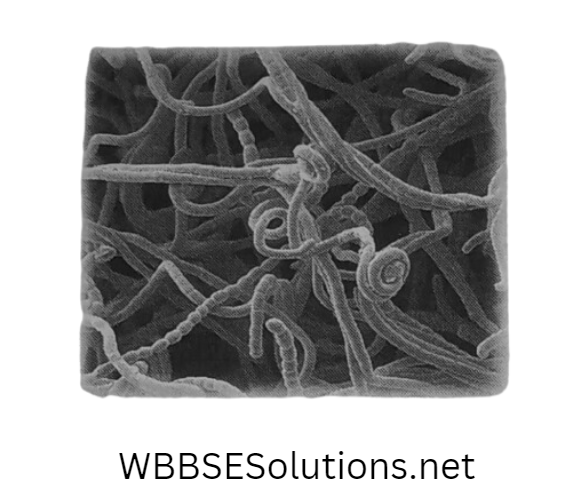Chapter 1 Interdependence Of Organisms And Environment Man And Other Animals Depend on Plants
Our Family and Our Society
Human beings are social organisms, they live in a society and they have specific roles to play as a teacher teaching, a student studying.
the doctor and nurse look after the ailing patients, a shopkeeper sells items, a policeman ensures the maintenance of law and order and protects the common man, municipal workers keep the city clean etc.
The judges and lawyers ensure that everybody gets justice, a civil servant and minister run the government and in this way, the society remains functional.
and it includes the grandparents, father, mother and the children.
The grandparents usually lead a retired life. They should be looked after properly. They guide the family with their wisdom.
Read And Learn More: WBBSE Notes For Class 6 School Science
The father usually earns money and does the marketing and the mother or any elderly member does the cooking and looks after the children.
The children study, play and make the place enjoyable. Interdependence means two or more people working together on a common activity or towards a common goal.
Examples of interdependent behaviour among family members may include helping one another to prepare the family meals.
Family represents the unit of society,
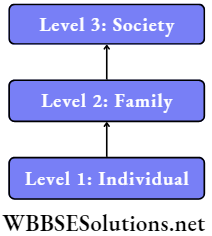
Again, there are circumstances when family members may have to take the help of someone outside of the family for some reason.
Such instances include taking help from a plumber to repair the tap, from a tailor to stitch the clothes, an electrician to repair faults in electric lines or gadgets and so on.
Thus there exists an enduring interdependence between society and family for mutual benefit, functional and emotional support, economic well-being and above all, overall societal prosperity.
Interdependence Between Plants And Animals
A group of mutually adjusted plants and animals inhabit a natural area as a community.
There is a great deal of interdependence or mutual dependence between plants and animals in a community.
No organism can live alone, they need other organisms to survive. The mutual interactions among the organisms are vital for the survival and functioning of the community as a whole.
Plants depend on animals for CO2 (raw material of photosynthesis), insects & other animals help in the pollination and dispersal of seeds, earthworms and other organisms making the soil fertile for the proper growth of plants.
On the other hand, animals depend on plants for food, medicines, fibres, clothing, other useful products, supply of O2, and removal of CO2, plants are homes and shelters for a variety of animals and provide materials for building and furniture etc.
Thus all organisms depend on one another for survival. This is known as interdependence
WBBSE Class 6 Interdependence of Organisms Notes
Dependence Of Animals On Plant
Green plants and similar organisms (autotrophs or primary producers)produce food for all other living organisms on the Earth.
Food provides energy and nutrients for organisms, such as animals (heterotrophs), that cannot trap energy from the sun through photosynthesis.
Some animals, called primary consumers, eat only plants. Others, known as omnivores, eat plants and animals both. Most humans are omnivores.
However, some people choose to eat only food that comes from plants. Plant-based food supplies vital nutrients that our bodies cannot make for themselves.
These nutrients include vitamins, which are chemicals necessary for the proper functioning of the body; sugar and other carbohydrates, which provide energy; amino acids, which are the building blocks of proteins; oils.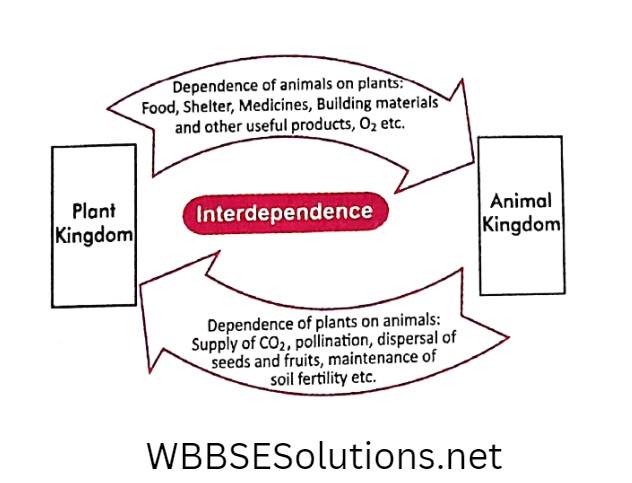
Another concentrated energy source; and minerals, such as potassium, magnesium and calcium.
Humans consume a remarkable variety of plants and plant parts. However, agriculture-the cultivation of plants is a relatively recent innovation in human history.
Many historians believe that the farming of plants began about 10,000 years ago in several parts of the world.
The plants we use as food today are very different from their wild ancestors.
Most food plants evolved through selection by many generations of farmers to produce larger fruits, grains and other edible parts and to be easier to plant, harvest and process.
The wide variety of food we eat today originated in many different and geographically separated parts of the world.
Uses Of Plants
Use Of Plants As Food
Root: Many foods come from plant roots. Important root crops include carrots, parsnips, beets, sweet potatoes, radishes and turnips These food help in the procurement of starch.
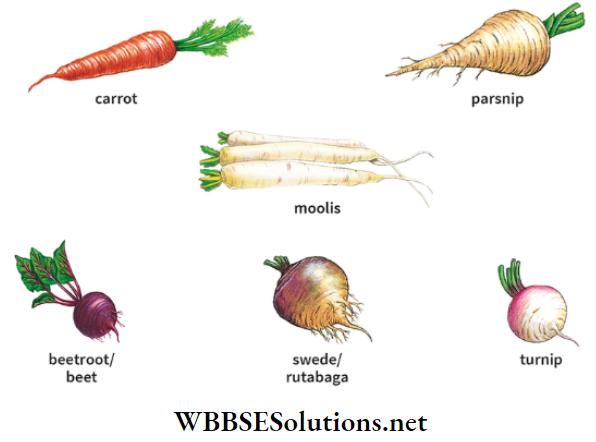
Stem: Potatoes, the underground modified stems, are specialized for the storage of Animal Kingdom of Starches. The bulb of onion is also an underground modified stem having an apical bud surrounded by multiple layers of fleshy leaves.
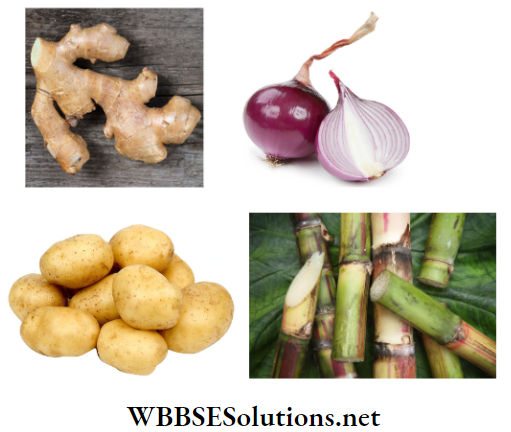
Rhizome includes the irregular fleshy stem of ginger, whose nodes are protected by scaly leaves. It has medicinal importance and is also used in cooked food as a flavouring agent.
The Corm of Amorphophallus is also a large club-shaped structure, consumed as a vegetable.
Other stems used as food include sugarcane, which is enriched in sucrose and Asparagus, and also used as a flavouring agent.
Leaf: Leafy food includes spinach, lettuce, brussels sprouts, and cabbage. All of these look like leaves.
However, food that comes from bulbs, such as leeks and garlic, is also made of leaf parts (the enlarged bases of long, slender leaves).
Celery and rhubarb stalks actually are the supporting stems (petioles) of leaves.
These leaves are a rich source of cellulose, which does not have much food value but is used as roughage.
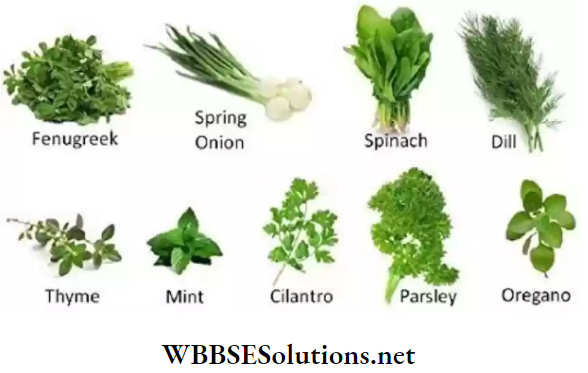
Important Definitions Related to Ecosystem Interdependence
Flower: Flowers are not eaten frequently, but cauliflower, broccoli and artichokes all are made up of flowers or flower buds. Flowers of gourd and other legumes are also consumed as vegetables.
Fruits and seeds, which develop after flowers are pollinated, are important food sources.
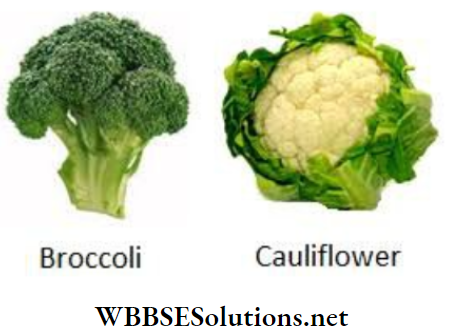
Fruits: Familiar fruits include. oranges, lemons, grapefruit, limes, apples, peaches, pears, grapes, melons, cherries, plums, tomatoes, all squashes, blueberries, green beans etc.
Mangoes, bananas, avocados, figs, breadfruit, eggplant, cucumbers, guava, pomegranates, dates, papaya, olives and zucchini are also fruits.
Fruits are useful sources of citric acid and vitamin C that commonly act as antioxidants.
Sometimes the entire inflorescence is consumed as a compound fruit like pineapple and jackfruit.
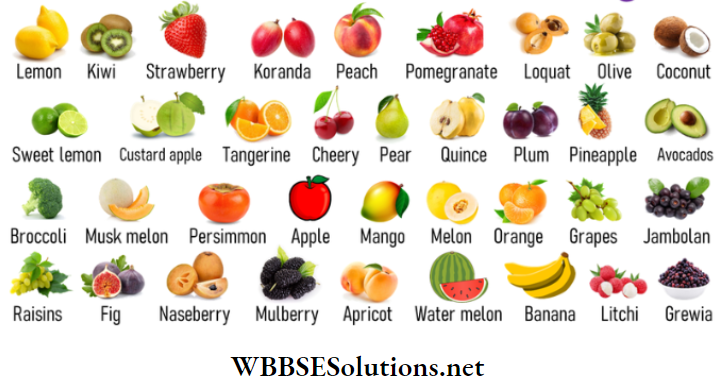
Seeds: Seeds often contain stored food resources (carbohydrates, oils, proteins) to fuel the growth of the tiny plants that they contain.
Important seeds that we eat are beans, peas, lentils and chickpeas. All of these are members of the bean or legume family.
Food in these seeds is stored in the fleshy leaves (cotyledons) of the plant embryo. Many nuts consist of seeds or parts of seeds. Examples are walnuts, pecans, almonds and peanuts.
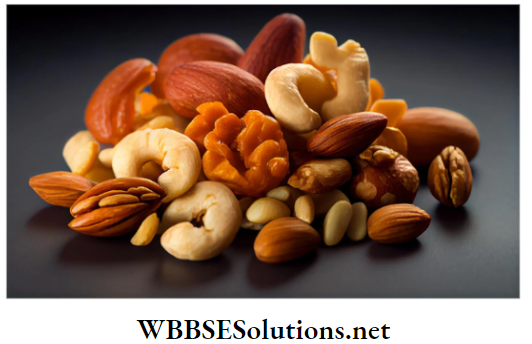
Grains: These are considered to be among the first cultivated crops, and are the small, dry fruits of members of the grass family. Grains look and behave very much like individual seeds.
The commonly cultivated food grasses are called cereals, after the Greek goddess Ceres. Major grain crops include barley, millet, oats, rice, rye, sorghum, wheat and corn (maize).
Rice, probably the most important grain, is the primary food source for more than 1.6 billion people.
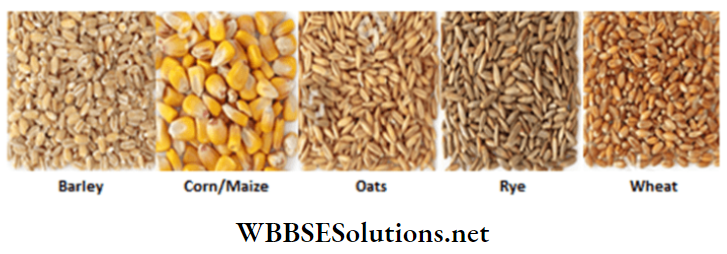
Use Of Plants As Fibres
Fibres: Fibre crops are plants that have elongated woody cells in stems, leaves, bark and seeds for support and transport.
These form fibres which can be used to make ropes, textiles, paper, upholstery and mattresses.
the 17th century. This fibre (Gossypium species) which is made from hairs that grow on the surface of the seeds, is the most important source of fibre used in textiles.
Cotton fibres: Cotton comes from plants that produce seed pods filled with ball-shaped clumps of cotton fibre. The seeds are separated from the cotton fibre mechanically.
The process continues by spinning threads from the remaining, seedless white fibre.
The threads are then woven to make cloth, which can be dyed. Cotton was grown in Pakistan’s Indus Valley more than 5,000 years ago.
Cotton was grown and used to make clothing in ancient Egypt. Cotton plants were exported to the Southern United States.
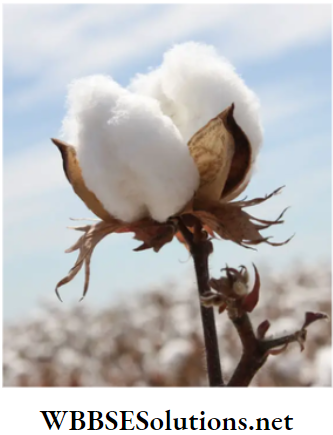
Fibre cells in the leaves of sisal (Agave sisalana) are used to make string, rope and rugs (small carpets); a wide variety of fibre sources, but mainly wood pulp, is used to make paper.
Hessian is a thick rough cloth used for making things such as bags and ropes, made from a plant, either hemp or jute.
Cotton fibres are used for making different types of cloth, they are as follows:
Bark cloth: A type of cloth made from the inner bark of various trees, used in Indonesia, Malaysia and the Pacific Islands.
Buckram: A stiff cotton cloth used for covering books.
Calico: A cloth made of cotton with a coloured pattern printed on it, very often these coloured dyes are made from plant-based pigment.
Cambric: A thin white cloth made from cotton or linen.
Canvas: A strong heavy cotton cloth used for making tents, shoes and sails.
Cheesecloth: A thin light cotton cloth suitable for tropical climates.
Crepe: A soft thin cloth with small folds on its surface, made from cotton or silk.
Denim: A thick cotton cloth that is usually blue and is used especially to make jeans, it was originally introduced for industrial workers but later became a trend in fashion.
Flannel: A soft cotton cloth made of soft fibre used for making clothes and sheets.
Gauze: A white cotton cloth that is very thin and has a loose interwoven texture, used in layers for protecting and treating an injury.
Khaki: Tough cotton cloth used in the making of soldiers’ uniforms, it has a typical brown colour.
Muslin: A light thin cotton cloth used for making dresses, curtains and sheets, it is one of the finest cloth made by human beings.
Organdie: A thin stiff cotton cloth that is used as dress material with a lot of starch.
Rayon: A light smooth cloth made from cellulose (from plant cells).
Flax fibre: Linen is made from fibres made from the stem of flax. Flax grows to a height of 4 feet and has leaves that consist of long, tough fibres.
Flax has been used since ancient times to make clothing. The ancient Egyptians used flax to create linen cloth more than 4,000 years ago and it was used in Medieval Europe to make cloth.
Flax is still used to make fabrics for clothing and it is commonly blended with synthetic materials and wool to add strength to fine yarns.
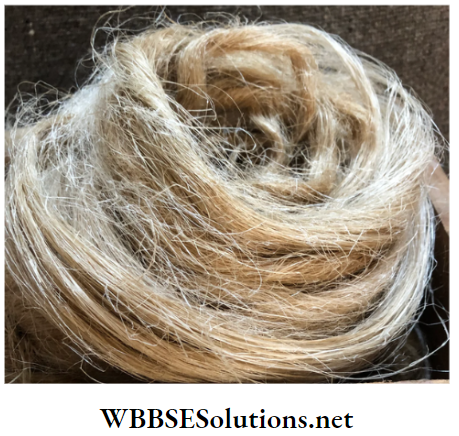
Hemp Fibre: Hemp comes from the Cannabis sativa plant and has been used to make cloth since ancient times.
In the 1980s, producers were able to make fine cloth suitable for clothing from hemp. This development occurred following the discovery of a process using enzymes that removed the fibres’ roughness while still allowing the fibre to retain its durability.
Designers currently use hemp, blended with other textiles, to make fine cloth, in contemporary designs.
Hemp fibre is resistant to stretching, which allows clothes made or woven with hemp fibre to retain their shape and size.
Hemp typically grows in warm climates, such as those found in tropical regions.
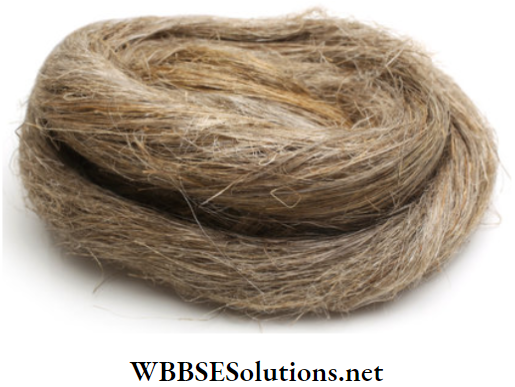
Ramie fibre: Ramie is grown in East Asia and is known as China grass. Ramie fibres have been found in fabrics used to wrap mummies in ancient Egypt.
Ramie fibres are fine and produce delicate silk-like threads when spun, although the fibres can become brittle when a dry process is used to spin them.
Cloth made from Ramie is resistant to stain and has a slight sheen that reflects light. Ramie fabrics are also used in the manufacture of garments because the cloth does not readily shrink.
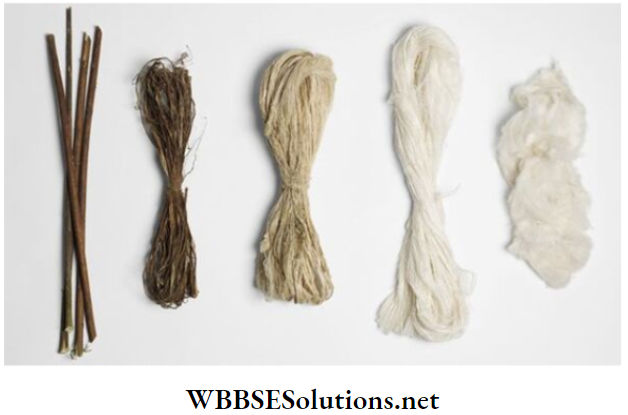
Plant materials used as building materials
Resins: Resins obtained from plants like pine, sal etc. are used in paints.
There are many other building materials obtained from plants, such as timbers of sal are used in making window frames and furniture. Softwoods are used for insulation purposes.
Plant excretory products may include pitches for waterproofing or making organic solvents for dissolving paints. Fibres are used as thatching material.
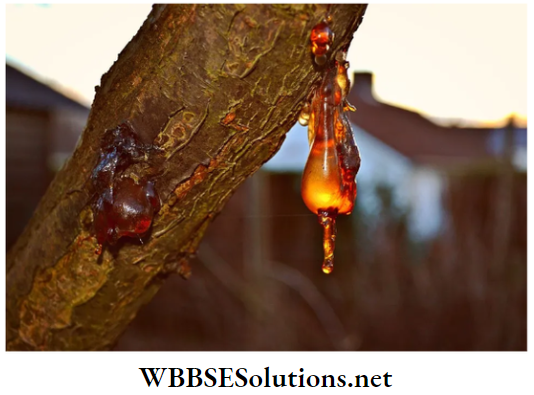
Rattans: Rattans (climbing palms) are used for all kinds of purposes, from building shelters to making cane furniture, baskets, mats and fish traps.
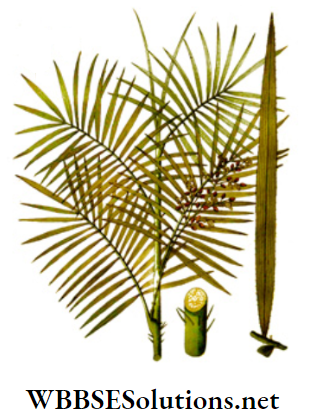
Coirs: Coirs are used for making door mats and also for making the lining of the floor.
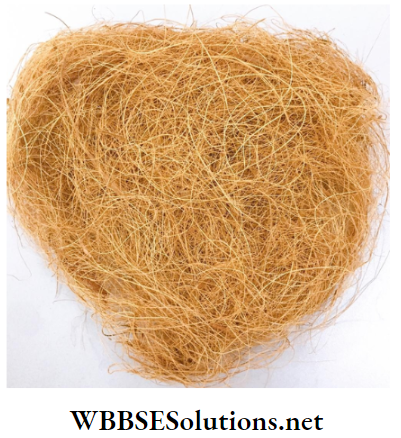
Use Of Plant Excretory Material
The plant excretory materials are used for different purposes as described below:
1. organic acids like citric acid is obtained from fruits of lemon tartaric acid is obtained from fruits of tamarind.
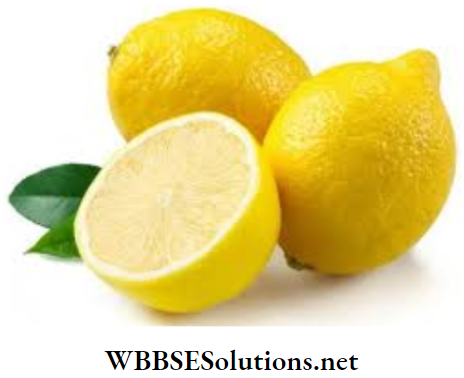
2. The latex of rubber plants obtained from the bark is used in the making of rubber
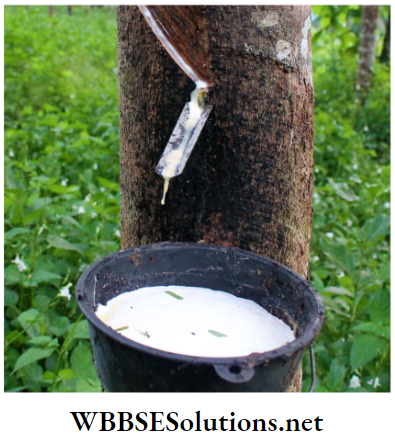
3. The resin from Pinus wood is used for producing turpentine, which is used in the making of organic solvent, or as a polishing agent.
4. Essential oil from the flowers of the lavender plant is used in the making of perfume, and lemongrass oil from the leaf is used as a pesticide.
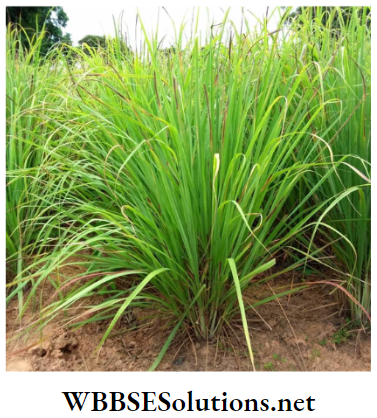
5. Tannin obtained from the leaves and twigs of different plants like tea, and Emblica are used in the making of printing ink or processing of leather.
6. Alkaloids obtained from different plant resources have medicinal importance; some of them are as follows:
1. Caffeine from coffee seeds is a stimulating agent.
2. Quinine from Cinchona bark is a malarial drug.
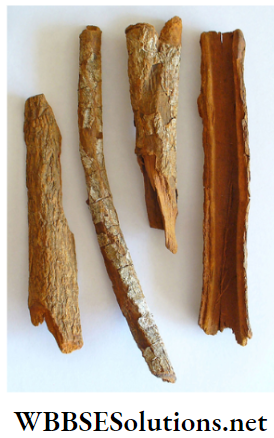
3. Amarogentin from chirata leaves is used against Salazar.
4. Atropine from the flowers of Atropa is used to dilate pupils.
5. Reserpine from the stem and twigs of Rauwolfia is used to treat high blood pressure
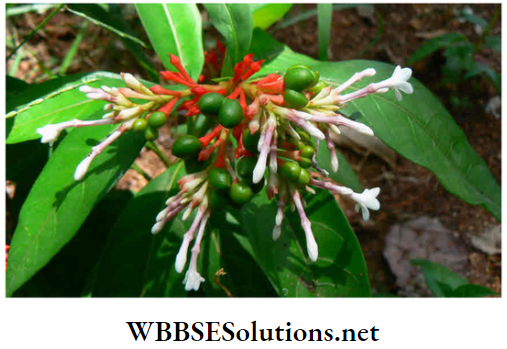
Plants Are The Dwelling Place For Animals
Birds like sparrows, crows, and common mynah directly use the plants as their dwelling places.
They use plant parts like fragments of stems, twigs, and leaves to prepare beautiful nests.
Other animals like squirrels and monkeys live in the trees. Bats hang from the branches of trees. Insects also live in the trees and get their food from them.
Ants and other stinging insects often take shelter on big trees, particularly fruit trees like mango and litchi.
These insects act as an army and protect the plants from enemies whenever necessary.
In some American acacias, a certain part of the leaf becomes hollow to be used as an abode for the insects and even some food materials are kept ready for them.
The insects, in return, render defence service in times of necessity.
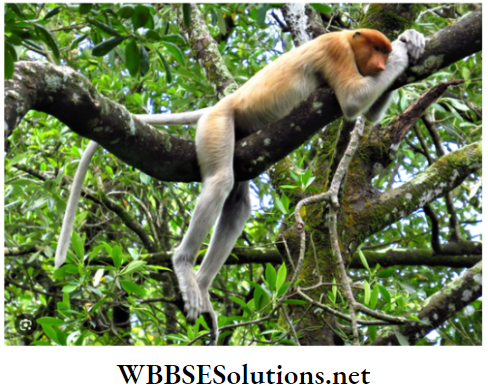
Plants As A Source Of Oxygen
Plants have chlorophyll, with which they carry photosynthesis. The process of photosynthesis has two phases, the light-dependent phase and the light-independent phase.
The light phase produces energy-rich compounds and also photolysis of water which generates oxygen.
The dark phase or light-independent phase is involved in the production of sugar by fixing carbon dioxide.
Thus plants provide food and oxygen to other members of the biotic community and absorb harmful carbon dioxide from the atmosphere.
Hence the environment is purified due to the maintenance of O2 & CO2 and global warming is reduced by the prevention of the abundance of CO2 in the earth’s atmosphere.
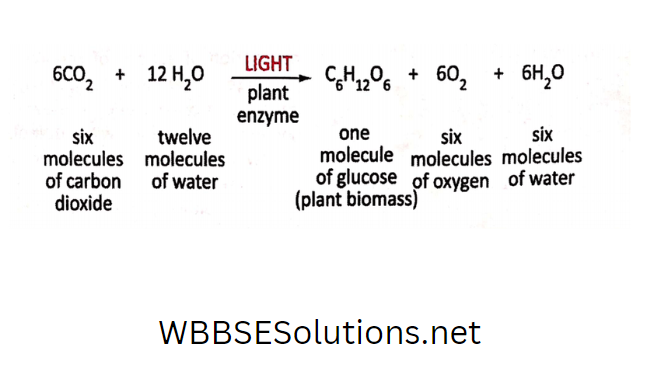
Dependence Of Plants On Animals
Pollination
The process of transfer of pollen grains from the anther to the stigma is called pollination.
When it occurs within the same flower, it is called self-pollination but when it occurs between two S different flowers, it is called cross-pollination.
Pollination leads to fertilization, the formation of plant embryos and the subsequent creation of new plants.
Thus the process of pollination is absolutely essential for the existence of the plant kingdom.
The process of cross-pollination is helped by different agents like air, water, animal, etc.
Animals Helping In Pollination
The animals that help in cross-pollination include insects, snails, birds, bats and other mammals like cattle.
1. Insect-pollinated flower:
These flowers have bright colours, they have nectaries and the petals are suited enough to allow the insects to settle down.
In the case of ant-pollinated flowers, the inflorescence is completely closed with an apical pore, through which only the ants can enter, e.g. Calotropis, Salvia, and Sunflower.
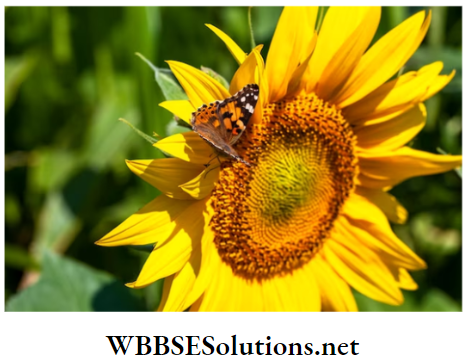
Examples of Real-Life Applications of Ecosystem Concepts
2. Snail pollinated flower:
These flowers are semi-aquatic and are protected by a fleshy bract, e.g. arum
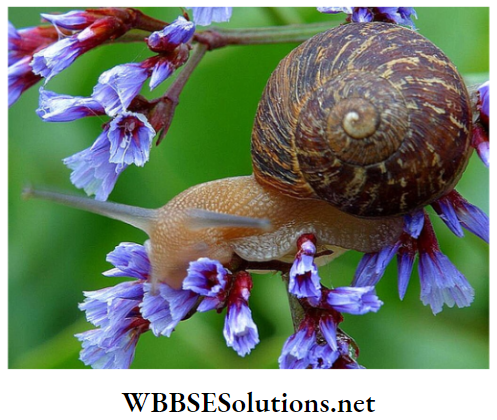
3. Bird-pollinated flower:
The flowers are large, and bright in colour, e.g. Bignonia
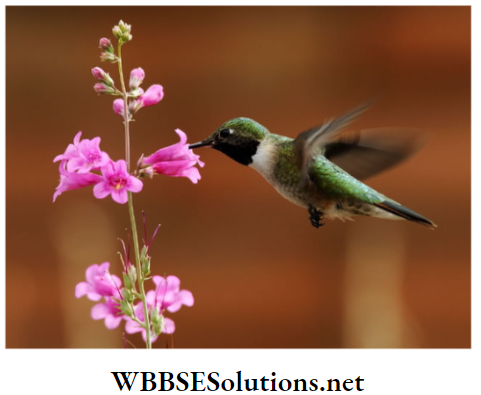
4. Bat-pollinated flower:
These flowers are large in size, and nocturnal, e.g. Kadam.
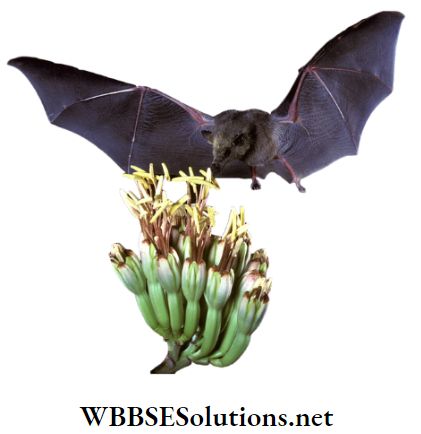
5. Cattle pollinated flower:
These flowers are large and are not destroyed even after being trampled by cattle, e.g. Rafflesia.
Fruit And Seed Dispersal
Seed and fruit (which contains the seed inside) dispersal is the movement, spread or transport of seeds or fruits away from the parent plant.
This method has several benefits for different plant species. First, seed survival is higher away from the parent plant.
This higher survival is due to the prevention of actions of seedling predators or pathogens which often target the high concentration of seeds beneath adult trees.
Secondly, competition with adult plants may also be lower when seeds are transported away from their parent plants.
This allows plants to reach specific habitats that are favourable for survival.
Thus dispersal of seeds or fruits is very important for the survival of plant species by spreading out in a wide area and avoiding competition with one another for the same resources.
Since plants are mostly immobile, thus they rely upon several abiotic agents (like wind, water etc.) and biotic agents (birds and animals including human beings) for the dispersal of seeds and fruits. The animals help in the dispersal of fruit and seed in the following way:
1. Berry and other fleshy fruits are consumed by birds. After that, the fruit rot within the alimentary canal and the seed come out with the egested matter and germinate in a different place.
2. Sometimes seeds or fruits have spiny projections, which get adhered to the hoofs of cattle and get dispersed, for example., Xanthium.
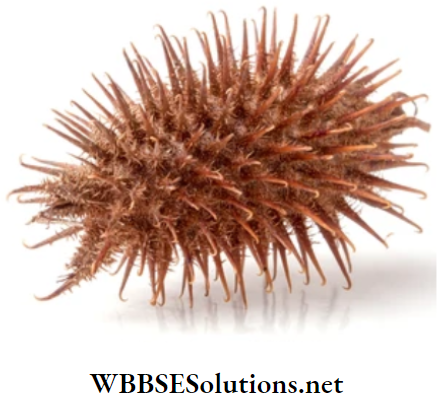
3. Seeds of chorkanta get adhered to the fur of animals or in the clothes of human beings and are dispersed through a wide area.
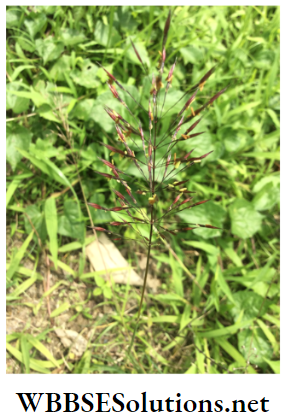
Nature Of The Relationship Of One Living Organism With Another
Symbiosis
It is a unique long-term association between two organisms of the same or different species where they two remain in close association and are mutually benefitted by each other.
Each of the participatory organisms is called a symbiont. There are different examples:
1. Cattle egrets and cattle:
These egrets are small birds (Heron) that remain along with cattle. When the cattle (eg. cows) walk, insects fly out of the grass.
The egrets feed on the insects sitting on the cattle’s bodies and thereby protect them.
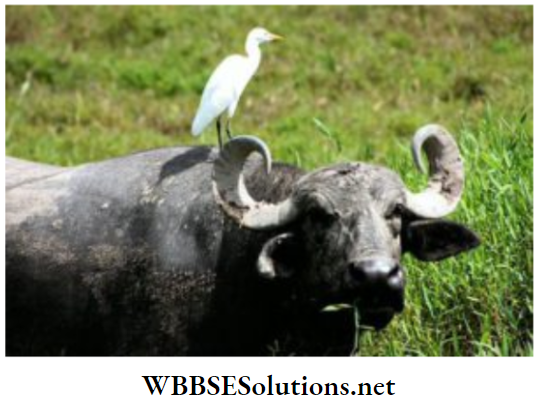
2. Clownfish and sea anemones:
The clown fish keeps away the enemy of the sea anemone ie, the butterfly fish and in return, they feed on the remnants of food left over by the sea anemone.
Sometimes the enemies are devoured by the sea anemone.
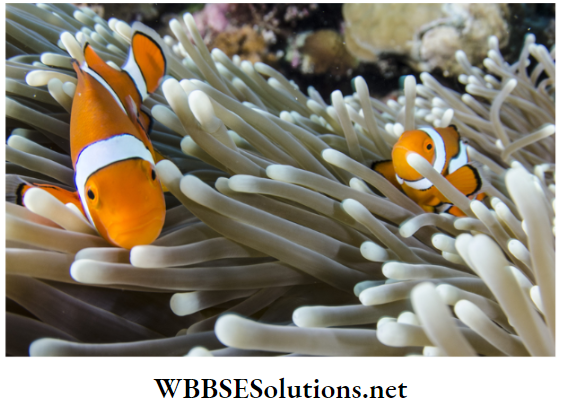
3. Ants and aphids: The aphid is a sap-sucking insect. The aphids feed on plant
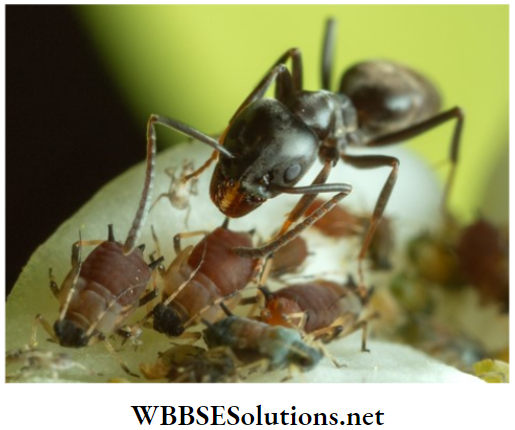
sap producing a sugary compound called the honeydew as excreta which is consumed by the ants.
The aphids remain well protected in the ants’ nest and the ants also carry them from one host plant to another as and when necessary.
4. Mynah and Rhinoceros:
Rhinoceros have very thick skin commonly inhabited by mites. The Mynah or other egrets feed on these mites and thereby provide relief to the Rhinoceros.
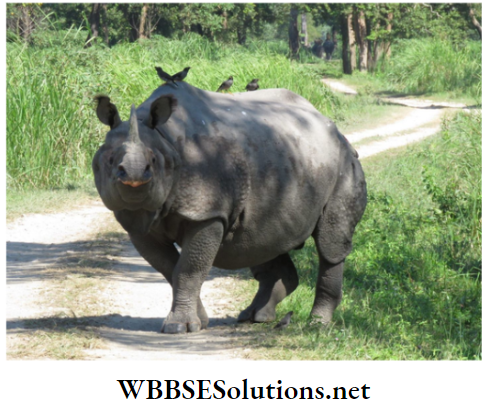
5. Hermit crab and sea anemone:
Since they have a soft abdomens, hermit crabs live inside the empty shell of marine animals to protect their vulnerable abdomen. The hermit crab carries the sea anemone on its shell.
The stinging tentacles of the sea anemone protect the crab while the sea anemone can move freely on top of the hermit crab and in return, has a share of food left behind by the hermit crab.
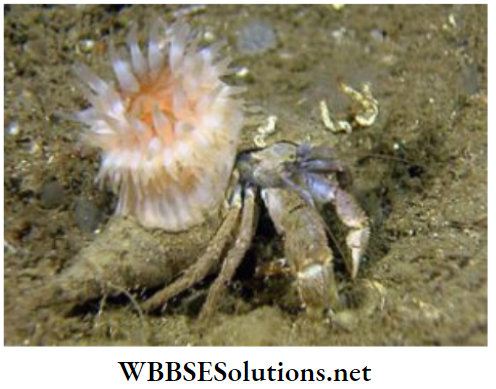
6. Azolla and bacteria:
Azolla is a kind of floating plant. A kind of bacteria called cyanobacteria (Anabaena azollae) takes shelter on its leaves.
This bacteria in turn fixes atmospheric nitrogen to help Azolla. Nitrogen is an essential ingredient of fertilizer. For this reason, Azolla is cultivated in the cropland.
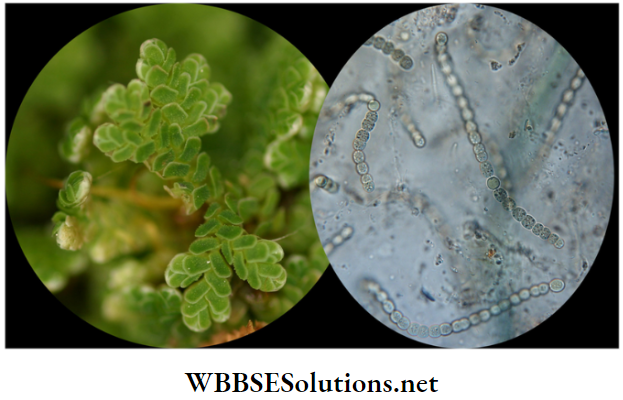
2. Predation
The phenomenon by which one animal feeds on another animal is called predation.
This habit has created a food chain and the animal that is fed upon is called prey, while the animal which is feeding on the prey is called predator.
Some of the predators and prey are given below Predation helps to maintain biodiversity and provides energy to prolong life and promote the reproduction of the predator to the detriment of the prey.
It thus has a controlling effect on the prey population in a community.
3. Parasitism
The relationship in which one organism lives on another living organism derives its nourishment from that organism and thereby gets benefits while the other organism is harmed is called parasitism.
Parasites influence the food web because they function as both predators and prey. Parasites that feed on hosts engage in a special type of predation.
Alternatively, parasites can also serve as important sources of prey.
For example, predators on islands in the Gulf of California (like lizards, scorpions and spiders) are more abundant on islands with seabird colonies because they feed on the bird ectoparasites.
Predators also inadvertently consume parasites during the consumption of infected hosts.
Parasites can be classified in different ways:
1. On the basis of the host:
Plant parasites: Dodder, fungi.
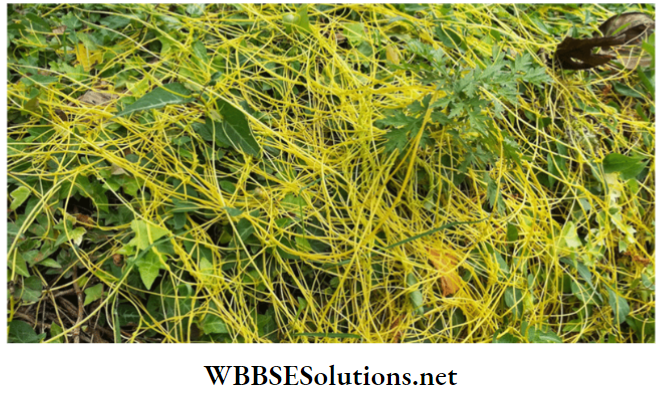
2. Human parasite: TB bacteria, Pig tapeworm.
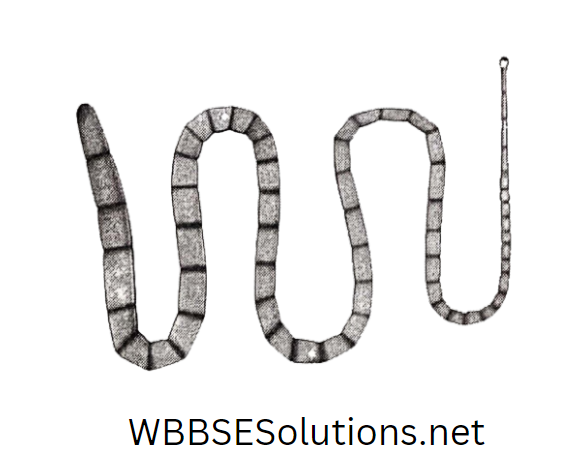
3. Animal parasite: Dog tapeworm.
On the basis of the part affected:
Stem parasite: Dodder or Swarnalata.
Root parasite: Viscum.
Leaf parasite: Rust fungus or Puccinia growing on wheat plants.
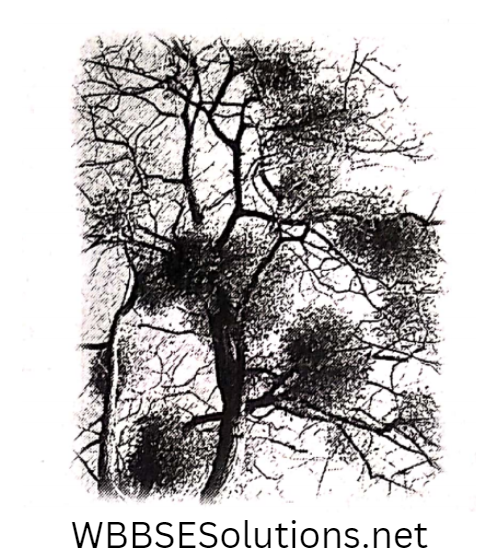
On The Basis Of The Location:
Ectoparasite:
The parasite that remains outside the host’s body is usually on the external surface, e.g. Lice growing on the scalp.
Endoparasite:
The parasite that grows inside the host’s body, very often they are anaerobic in nature, e.g. Pork tapeworm.
On the basis of nature, parasites may be classified as:
Obligatory parasite:
The parasites which are always parasitic and never survive as saprophyte is called obligatory parasites, e.g. Puccinia graminis causing black stem rust of wheat.
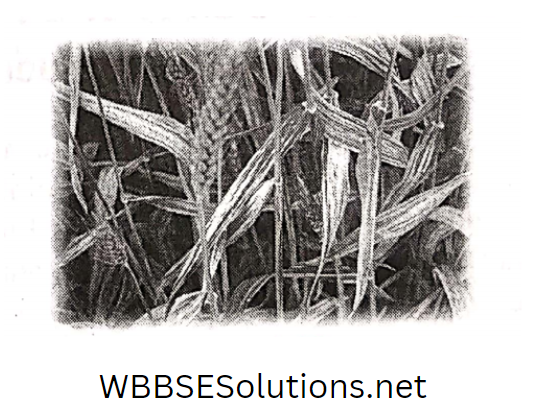
Facultative parasite:
These parasites may survive both as saprophytes and parasites in nature, e.g. Aspergillus.
Some of the major parasites:
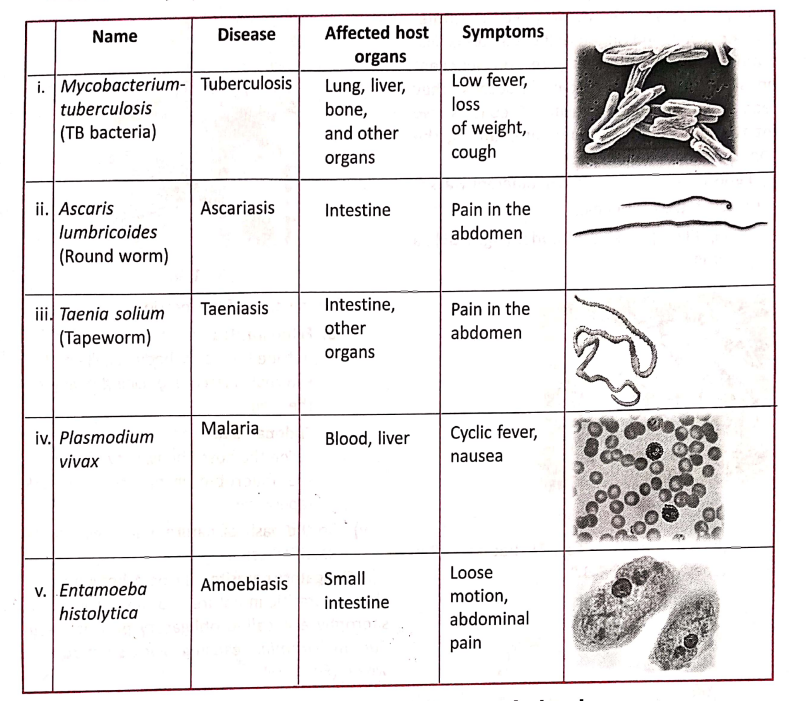
Dependence Of Man On Animals
The earth, its ecosystem and its creatures are all deeply connected. Thus, the existence of many species depends on the survival of others.
Human beings are no exception. There are many animals we rely on for our benefit and well-being.
In fact, many animals actually help people just by performing their natural roles in their environment.
Human beings depend on animals with respect to food, clothing, medicines, reduction of pollution and also as a mode of transport.
1. Animals as food:
The animals are the source of different types of food like meat, fish, eggs, milk, honey etc.
Meat is obtained from different animals like goat, cattle, pork and also chicken from poultry birds.
Eggs from poultry birds are useful sources of fat, protein, sulphur, and calcium.
Honey obtained from the honey bee is a useful source of sugar, minerals and vitamins.
2. Animals used for preparing clothes:
Silk thread produced by silkworms is a protein thread used in the making of quality dress material.
The quality of silk varies with the type of silkworm and the plants on which they feed.
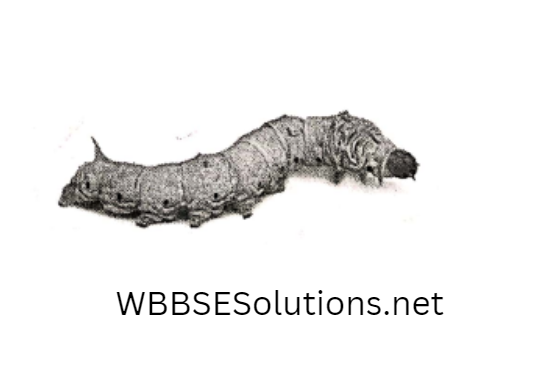
Wool obtained from sheep and goats (Angora goats, Kashmiri goats etc.) is another important variety of thread used for making warm clothes.
3. Medicines from animals:
Animal lovers are a very good source of vitamins. The liver of cod and halibut fish are a potential source of vitamins A and D.
Vitamin D is good for bone formation while vitamin A is a potential source of retinol, which helps in the synthesis of rod cells in the retina that are responsible for low-light vision.
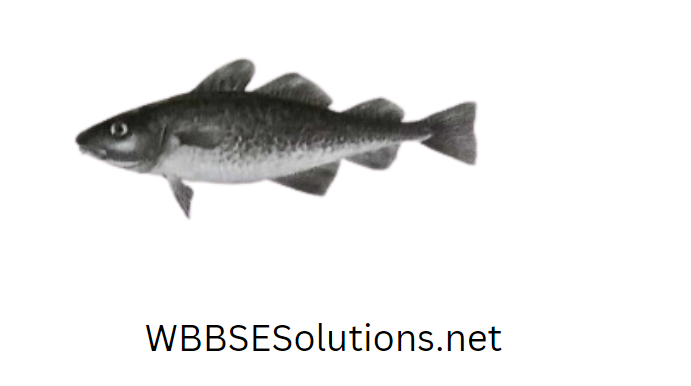
4. Animals helping in the reduction of pollution:
Some animals help in the reduction of pollutants. Crows are ideal scavengers feeding on leftover food and organic matter, animal waste and carcasses.
Vultures also feed on animal carcasses and reduce pollution. Pigs feed on animal waste and other organic waste and thus clean the environment.
Some animals like guinea pigs feed on their own excreta, the phenomenon is called coprophagy and thereby they absorb the essential nutrients which they cannot digest at first time.
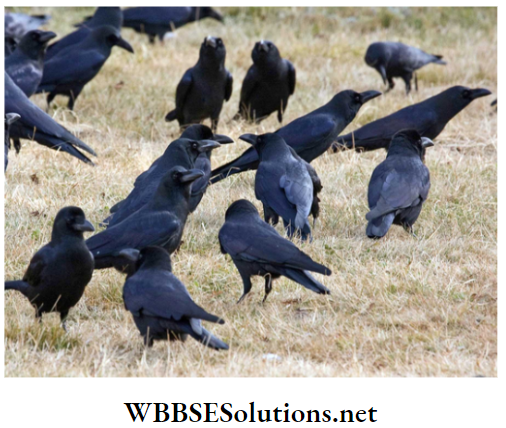
5. Animals used as transport:
Animals have been used as a mechanism of transport, like bullock carts, horse carriages etc.
In the present day, with the increasing speed of life, these carriages are mostly used in rural areas as means of transport and less used in urban areas.
6. Animals used in agriculture:
Cattle (cow, buffalo or lamb) were previously used in ploughing agricultural land but presently with the increasing use of mechanized agricultural equipment, the use of animals in agriculture has been mostly discontinued.
Microbes Useful To Human
Microbes include microscopic organisms like bacteria, fungi, algae, protozoa etc. which are not visible to the naked eye.
Many of these organisms are useful to humans and are used in the preparation of curd, bread and medicines.
1. Preparation of curd:
Curds are formed from milk by the lactic acid bacteria, Lactobacillus lactis which helps in the fermentation of lactose sugar to lactic acid.
The formation of lactic acid prevents the growth of pathogenic bacteria in the curd.
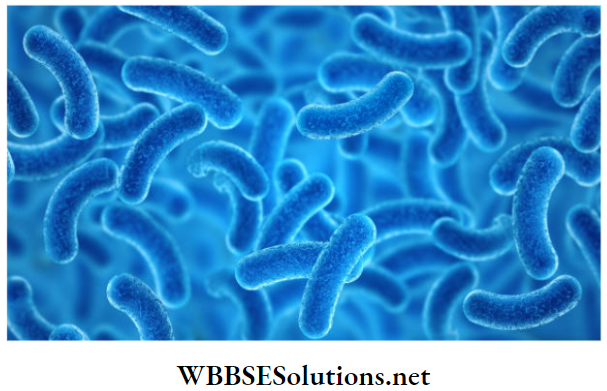
2. Production of bread:
The dough made of wheat or flour is fermented by a unicellular fungus called yeast to produce bread. Yeast breaks down the sugar present in the wheat or flour.
Carbon dioxide and alcohol are also produced in the process.
Mild heating causes the carbon dioxide to be liberated thereby causing the porous texture of the bread. This way bread becomes soft and spongy.
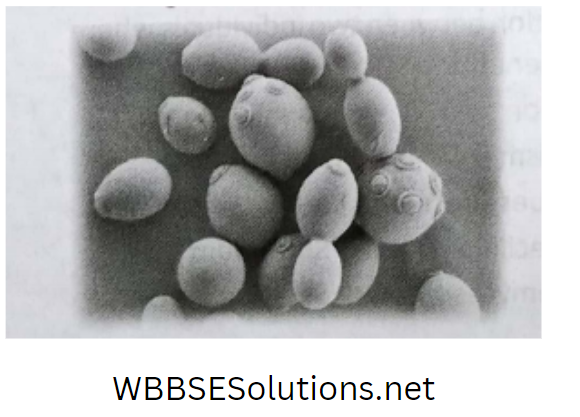
3. Production of Medicines:
Microbes are a useful source of medicines like antibiotics.
The green mould Penicillium notatum produced the first antibiotic, penicillin as was discovered by Sir Alexander Flamming.
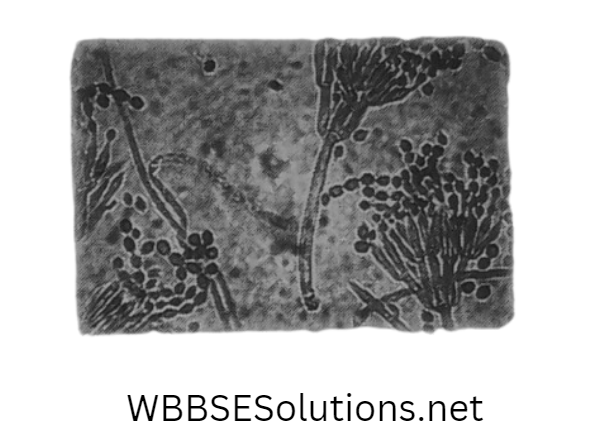
Streptomyces is a bacteria-like organism belonging to the actinomycetes group, which produces antibiotics like streptomycin and erythromycin which are used against pathogenic organisms.
